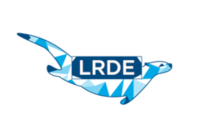Student Seminar 2019-07-01
From LRDE

13h00 Modelling and Identifying Troll Farm Accounts on Twitter – Antoine Sainson
There is evidence that many news items are covered by troll farm accounts (i.e. over biased opinion or “fake news” spreading accounts). By modelling techniques and finding patterns of those accounts, it would be possible to anticipate their actions, and inhibit the spread of rumors. Within this context, the goal is to build a model to flag such accounts on trending topics. To do so, we use an unsupervised approach based on a dataset full of trolls from different countries released by Twitter in 2019
13h30 Automatic troll farm account detection on Twitter – Hugo Linsenmaier
Social media have been extensively used in the attempt to influence users with biased information and rumors. Recently, a new set of accounts know as troll farms have emerged, lauching coordinated disinformation campains. In this regard, we aim to identify the creation of troll farms by studying how they differ from common users and how they attempt to influence them. By leveraging graph analysis techniques we will look into how trolls propagate information through Twitter. Our goal being to build a system capable of recognizing troll farm accounts on trending topics on Twitter.
14h00 Artificial states generation in state spaces using kernel density estimation – Thomas De Carvalho
The objective is to improve Spot, a model checking library. Spot deals with a specific kind of graph in which each state is a set of variables with given values. These values can be seen as coordinates and a state can therefore be seen as a N-dimensional point. The state space is then a N-dimensional cloud and Spot does a depth first search on it. We want to generate states on the fly to improve the performances. For that, we use a kernel probability density estimation. The generated states are then used as starting points for threads which will explore the state space in parallel.
14h30 Estimation of the noise level function in natural images using the tree of shapes – Baptiste Esteban
Nowadays, a lot of applications need to know the noise level in an image. A method had already been developped to know the noise level function in an image using the detection of homogeneous blocks and has been extended to the detection of homogeneous shapes, using the tree of shapes, which fits better the image content. However, this method is limited to grayscale images. So we aim to extend this estimation to color images, the pixels being multivariate.
15h15 Detecting danger in marine environnement – Charles Ginane
The goal of this project is to increase security during boat's navigation. Using an artificial intelligence which analyses images allows to identify different kinds of danger that a boat can encounter during its navigation. Artificial intelligence can detect a man at sea and alert the boat's crew to help him. To develop this artificial intelligence, a dataset of different marine videos is needed to assure the maximum of situations in the marine environment. Generate a lot of realistic videos by computer is mandatory to train this artificial intelligence.
15h45 Integrating Mathematical Morphology within Deep Convolutional Neural Networks – Alexandre Kirszenberg
Image Segmentation is the process of identifying the outline of objects in the composition of an image. In recent years, the use of Deep Convolutional Neural Networks for the purpose of Image Segmentation has spiked, with results outperforming more classical approaches. We will explore the implementation and potential applications of integrating filters from the theory of Mathematical Morphology within the structure of a Deep Convolutional Neural Network.
16h15 Mathematical morphology and deep convolutional neural networks – Younes Khoudli
Mathematical morphology is a classical method of image segmentation. In the past few years, maching learning using deep fully convolutional networks provides started providing extremly good results. We thus introduce morphological operators in those networks in order to improve their performance.
16h45 Implementing Baker's SUBTYPEP decision procedure – Leo Valais
The Common Lisp language provides a predicate functionSUBTYPEP, for instrospecting sub-type relationship. In some situations, and given the type system of this languageknowing whether a type is a sub-type of another would require enumerating all the element of that type, possibly an infinite number of them. Because of that, SUBTYPEP is allowed to return the two values (NIL NIL), indicating that it couldn't answer the question. Common Lisp implementations have a tendency to frequently not answereven in situations where they could. Such an abusive behavior prevents potential optimizations to occur, or even leads to violating the standard. In his paper entitled “A Decision Procedure for Common Lisp's SUBTYPEP Predicate”Henry Baker proposes an algorithm that he claims to be both more accurate and more efficient than the average SUBTYPEP implementation. We present here the current state the current state of our implementation and discuss one potential improvement based on R-trees of Baker's algorithm.
